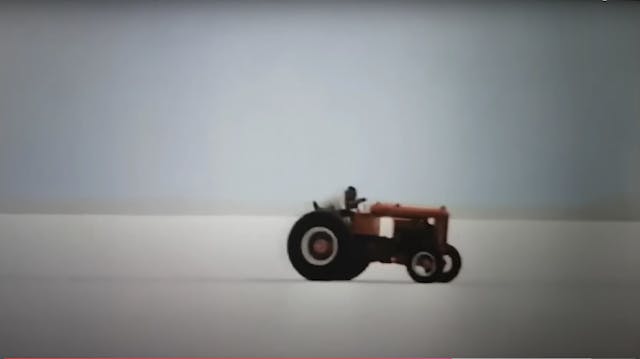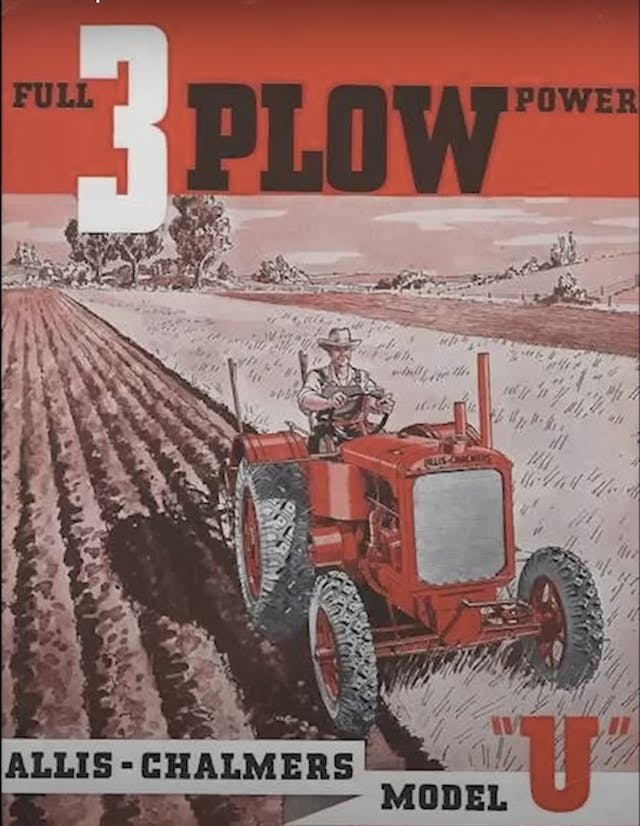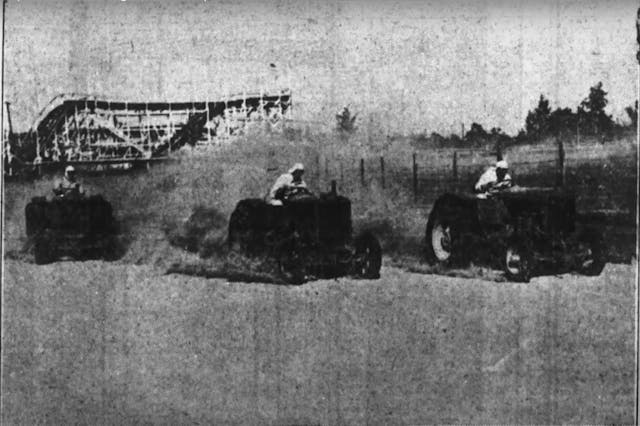Media | Articles
Watch the Wild Top-Speed Run That Helped Sell the First Tractors with Rubber Tires

There exists a switch deep inside the human brain that, if tripped, will force the person into a lifetime of chasing the thrill of speed behind the wheel of some machine. Cars are an obvious choice; it’s when you chase records in other weird and wonderful machines that life gets truly interesting, especially if you’re doing so on the alien landscape of the Bonneville salt flats. Case in point: The Allis Chalmers Model U tractors that set land-speed records in the 1930s.
That’s right, racing tractors.
Allis Chalmers built just about anything at the turn of the 20th century. A company stretched across so many industries, from furnaces to tractors to industrial-scale mining equipment, is not likely to be very profitable in one particular niche. But the company had one thing going for it: The people at the top of Allis Chalmers had interesting friends like Harvey Firestone. As you can guess, if tractors were to achieve anything above a brisk walking pace, the iron wheels with paddles or spikes needed to go.

Allis Chalmers was one of the first companies to put rubber tires on its tractors, in 1932. Not only did the operators enjoy the more comfortable ride produced by the tires, but the tractor lost no real performance. In fact, fuel economy improved dramatically. The tires also allowed for more speed, which meant more strain on the engine, so in 1932 the Model U tractor got a fourth gear that allowed it to reach previously unheard-of speeds—double digits!


Stunts to highlight the Model U’s capability soon followed. One Model U pulled a trailer from Minneapolis to Chicago—likely over 500 miles in that era—and averaged 17 miles per hour. And the same tractor could still pull a four-bottom plow.
Marketplace
Buy and sell classics with confidence


If 17 mph was getting the farmers’ attention, what about more speed? Allis Chalmers partnered with Frank Brisco, Barney Oldfield, and Ab Jenkins to take three Model U tractors out for some real racing. In 1933, it took a lot to get people talking and even more to get people buying, so while the tractors claimed to be stock all three were likely hopped up or modified in various ways. The trio became a rolling show that appeared at state fairs and events where the tractor would pull a plow on one field and then drop the plow and make a “high speed” pass on a dirt oval. While 35 miles per hour might not sound like much, anyone who has driven a tractor knows that is hardly a leisurely or fun pace in such a machine. Ab Jenkins eventually ran over 65 miles per hour on a public road.
From there it only got crazier, as an even more specially modified Model U took to the Bonneville Salt Flats in June of 1935 for more focused attempts at top speed. Ab Jenkins went so far as to tuck himself down into the steering wheel, for the sake of aerodynamic efficiency, and he achieved 67 mph.
If you were wondering where this tale would end, it’s here. How the drivers of the tractors got this far without any major incidents is pretty amazing. There was one crash during a fair in Tennessee after the Bonneville runs that resulted in a broken ankle, but considering the equipment, that is stunning.

The three tractors that composed this merry high-speed circus were eventually sold and have disappeared. Now the land-speed Allis Chalmers are all but a memory, a reminder of just how wild marketing can get when you mix in a few gearheads and a little time. There is even more to this story than what is printed here and I encourage you to check out Brian Lohnes’ YouTube page to watch the whole video, including in-period video of the tractors during their high-speed runs.

















Never knew, thanks for the education. These were things that were done by real men doing real work.
Hi Craig their is no easy way to say this but you are my dad
In the Hagerty comment section is wild
Popping wheelies on grandpa’s 1948 Farmall H
Barney Oldfield really ! Who knew? _ Yep! As you wrote get some gearheads together and hopping it up is going to inevitably happen. Get just two together who both have machines and they’re going to race sooner or later. They had wagon pulls way back when, tractor almost as soon as they came into use at the local fair. Today multiple supercharged big blocks and turbines. – ” Pull on Sunday, Plow on Monday ” –
In the early 1930s, Jabez Love built tractors designed to pull wagons down the road at highway speeds. His early “Tructors” were built using parts from a Ford Model B Truck and would reach speeds up to 45 MPH. His later tractor would reach speed of 60 MPH. You can learn more about them by search “Jabez Love” You have to believe he was influenced by the A-C races.
I love the idea of going silly fast on a Tractor. The video was fun to watch. A little bit of history I did not know.
Driving a slow vehicle fast indeed!
I grew up on a farm in southern Illinois. Everything on the farm was AC orange. AC’s were always cutting edge and often outside the box. Thanks for spreading the gospel of “The Orange”.
My 1951 A-C WD “tricycle” tops out at about 9 MPH – and that is PLENTY fast!